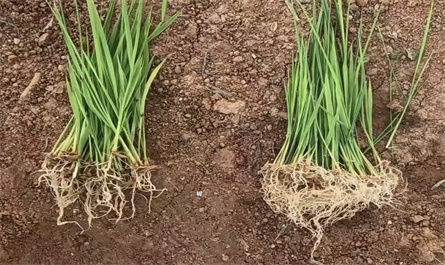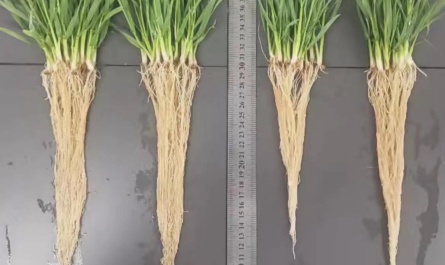Is it better to use Paclobutrazol or Chlormequat Chloride to control wheat growth?

1. Excessive growth caused by early sowing
- Paclobutrazol (Paclo):
- Paclobutrazol is a highly effective plant growth regulator that can inhibit the synthesis of endogenous gibberellins in plants, thereby delaying plant growth. If wheat grows vigorously because of early sowing, Paclobutrazol is a good choice. It can effectively control the plant height of wheat, shorten the stem nodes of wheat, and thicken the stem walls. For example, for situations such as excessive tillering and slender leaves of wheat seedlings caused by early sowing, the use of Paclobutrazol can inhibit the production of ineffective tillers and make the wheat seedlings stronger. Its lasting effect is relatively long, and generally one use can control the growth momentum of wheat for a long time.
- When using Paclobutrazol, usually 30-50 grams of 15% Paclobutrazol wettable powder per mu is used, and 30-40 kilograms of water are added for spraying. However, it should be noted that the concentration should not be too high, otherwise it may over-inhibit wheat growth, causing wheat growth retardation and even affecting yield.
- Chlormequat Chloride:
- Chlormequat Chloride mainly controls plant growth by inhibiting plant cell elongation. Chlormequat Chloride can also play a certain control role in the excessive growth of wheat caused by early sowing. It can make wheat plants shorter and enhance the lodging resistance of wheat. However, the efficacy of Chlormequat Chloride is relatively short, and it may take multiple uses to achieve a long-term control effect similar to paclobutrazol.
- In general, when using Chlormequat Chloride, 200-300 ml of 50% Chlormequat Chloride solution can be used per mu, and 30-40 kg of water can be added for spraying. However, during use, if the concentration is too high, it may cause yellowing of wheat leaves and growth stunting.

2. Excessive growth due to excessive fertilization
- Paclobutrazol:
- When wheat grows vigorously due to excessive fertilization (especially excessive nitrogen fertilizer), Paclobutrazol can regulate the balance between vegetative growth and reproductive growth of wheat. It can inhibit wheat's excessive absorption and utilization of nitrogen fertilizer, and encourage wheat to allocate more nutrients to the reproductive growth stage, such as spike differentiation. This can avoid problems such as lodging and small spikes in the late stage caused by excessive vegetative growth of wheat.
- Chlormequat Chloride:
- Chlormequat Chloride can also control the plant height of wheat in this case and prevent excessive growth caused by excessive fertilization. It can make the leaves of wheat become wide and thick, and improve the photosynthesis efficiency of the leaves. At the same time, Chlormequat Chloride can enhance the ability of wheat roots to absorb and utilize nutrients, so that wheat can better utilize nutrients in the soil while controlling excessive growth, avoiding nutrient waste and growth imbalance caused by excessive fertilization.

3. Vigorous growth caused by excessive planting density
- Paclobutrazol:
- Paclobutrazol has a good regulatory effect on wheat that grows vigorously due to excessive planting density. It can reduce ineffective tillering of wheat and make wheat plants more compact. By inhibiting the upward growth of wheat plants, paclobutrazol can allow wheat to grow better in a limited space and avoid excessive competition between plants for resources such as light, water and nutrients.
- Chlormequat Chloride:
- Chlormequat Chloride can also improve the problem of vigorous growth caused by excessive planting density to a certain extent. It can dwarf wheat plants and enhance the plant's resistance to lodging. In addition, Chlormequat Chloride can adjust the angle of wheat leaves, making the leaves more upright, thereby increasing the light-receiving area of the leaves and improving the photosynthetic efficiency of the group, and to a certain extent alleviate the problem of insufficient light caused by excessive planting density.
RECENT POSTS
Featured News



